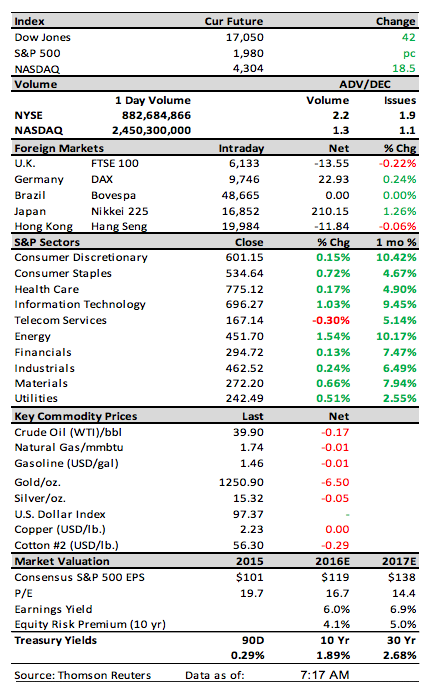Tony Orlando & Dawn (1970)
The year was 1970 when Tony Orlando & Dawn released the song "Knock Three Times." The song was about a man who had fallen in love with a woman living in the apartment directly below his but didn't know if she had any interest in him. Accordingly, he asks her to respond by knocking three times on the ceiling if she is interested and banging twice on the pipes if the answer is no. Since my "three times" have been spent in Orlando at Raymond James' 37th Annual Institutional Investors Conference for the past three days, the song seemed appropriate. It's also appropriate in that it tends to take "three knocks" on an overhead resistance zone before a stock, or an index, breaks above that resistance level. Recall, it took three "bonks" against the S&P 500's (SPX/1989.26) overhead resistance zone between 1945-1950 last month before the SPX broke through and headed toward our next overhead resistance zone of 2000-2040. The first "bonk" came last Friday when the intraday high for the SPX was 2009. In Monday's Strategy Report we said:
"The ~11% rally from the intraday low (2-11-16) to Friday's intraday high (2009) has left the NYSE McClellan Oscillator about as overbought as it ever gets. And as the astute Lowry's organization notes, 'The % of OCO (Operating Companies Only) stocks above the 30-DMAs has moved to its highest level in over a year and is now well above the fully overbought level at 80%. This overbought reading could cause the market to moderate the pace of its gains in the rally from mid-February.' We agree and would counsel participants to be more cautious with high beta names."
So, we've had the first "bonk" and subsequent pullback. The question now becomes, "Will we get a second and/or third 'bonk'?" As often stated in these missives, if we get three "bonks" against said overhead resistance, typically the security in question breaks out to the upside consistent with my mantra "Triple tops rarely hold!" I will add this week's action has left the NYSE McClellan Oscillator (M/O) back in neutral territory (see chart). Does the M/O have to become oversold before another upside "bonk?" Absolutely not! In fact, the market's internals are getting better by the day with the Advance/Decline Line improving, the NYSE Bullish Percent acting perky, and Credit Spreads narrowing. Hence, the first three sessions of this week should be viewed as consolidation days as participants posture in front of today's ECB meeting. We have already stated this week's ECB should not be a disappointment like many before. This morning, the consolidation extends as folks await the ECB's decision.



Jeffrey D. Saut is chief investment strategist at Raymond James.








